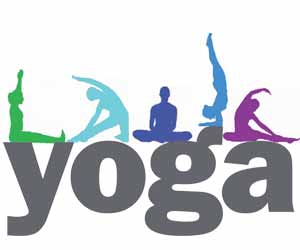- Home
- Editorial
- News
- Practice Guidelines
- Anesthesiology Guidelines
- Cancer Guidelines
- Cardiac Sciences Guidelines
- Critical Care Guidelines
- Dentistry Guidelines
- Dermatology Guidelines
- Diabetes and Endo Guidelines
- Diagnostics Guidelines
- ENT Guidelines
- Featured Practice Guidelines
- Gastroenterology Guidelines
- Geriatrics Guidelines
- Medicine Guidelines
- Nephrology Guidelines
- Neurosciences Guidelines
- Obs and Gynae Guidelines
- Ophthalmology Guidelines
- Orthopaedics Guidelines
- Paediatrics Guidelines
- Psychiatry Guidelines
- Pulmonology Guidelines
- Radiology Guidelines
- Surgery Guidelines
- Urology Guidelines
Hot yoga lowers blood pressure in adults with hypertension, study finds

Hot yoga lowers blood pressure in people with hypertension, study finds.
Taking hot yoga classes lowered blood pressure in a small study of adults with elevated or stage 1 hypertension, according to preliminary research presented at the American Heart Association’s Hypertension 2019 Scientific Sessions.
Hot yoga is a modern practice, typically offered in a hot, humid atmosphere, with room temperatures around 105 degrees Fahrenheit. Some believe the practice of hot yoga replicates the heat and humidity of India, where yoga originated, while others look at the excessive sweating as a way to rid the body of impurities.
- Adults taking hot yoga had lower blood pressure measurements after three months of classes, in a small study examining hot yoga’s impact on blood pressure.
- Hot yoga is typically a vigorous workout practiced under hot and humid conditions.
- Study researchers say this is one of the first studies of hot yoga’s benefits in lowering blood pressure and more research is needed to determine if the practice has true blood pressure lowering power.
While there is evidence of regular, room-temperature yoga’s positive effect on blood pressure, little is known about hot yoga’s potential impact on blood pressure, according to the study researchers. Researchers randomly assigned five participants to take 12 weeks of three-times-weekly hour-long hot yoga classes and they assigned the other five to a control group of no yoga classes. They compared average blood pressures of the two groups after the 12 weeks. The researchers looked at average 24-hour blood pressure readings, as well as perceived stress and vascular function of participants in both groups.
At 12 weeks, they found:
- Systolic blood pressure dropped from an average 126 mmHg at the study’s start to 121 mmHg after 12 weeks of hot yoga. Average diastolic pressure also decreased from 82 mmHg to 79 mmHg in the hot yoga group.
- Average blood pressure did not change among the five adults in the control group, those who did not take hot yoga classes.
- Perceived stress levels fell among those in the hot yoga group but not in the non-yoga group.
- While waking systolic and diastolic pressures fell in the hot yoga group, blood pressure readings taken during sleep did not change.
- There were no changes in vascular function in either group.
“The results of our study start the conversation that hot yoga could be feasible and effective in terms of reducing blood pressure without medication,” Hunter said. “However, larger studies need to be done before we can say with confidence that hot yoga has a positive impact on blood pressure.”

Disclaimer: This site is primarily intended for healthcare professionals. Any content/information on this website does not replace the advice of medical and/or health professionals and should not be construed as medical/diagnostic advice/endorsement or prescription. Use of this site is subject to our terms of use, privacy policy, advertisement policy. © 2020 Minerva Medical Treatment Pvt Ltd